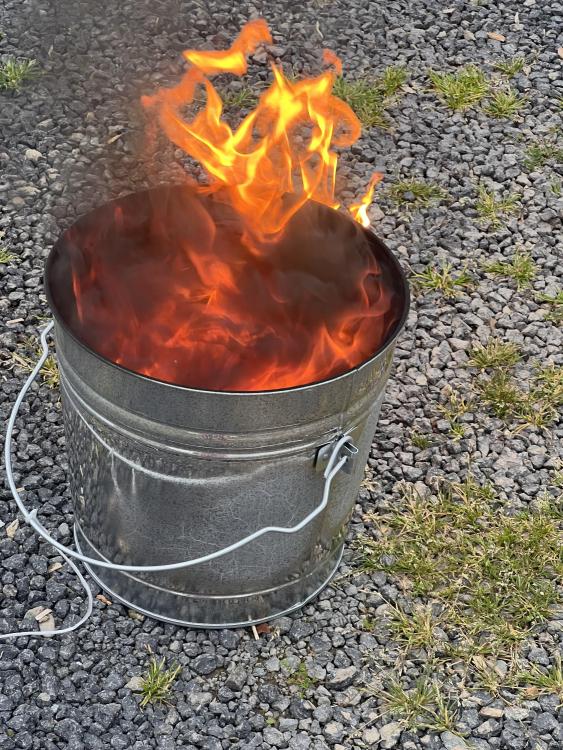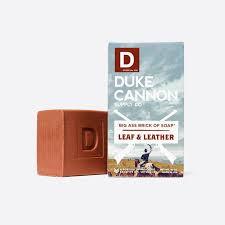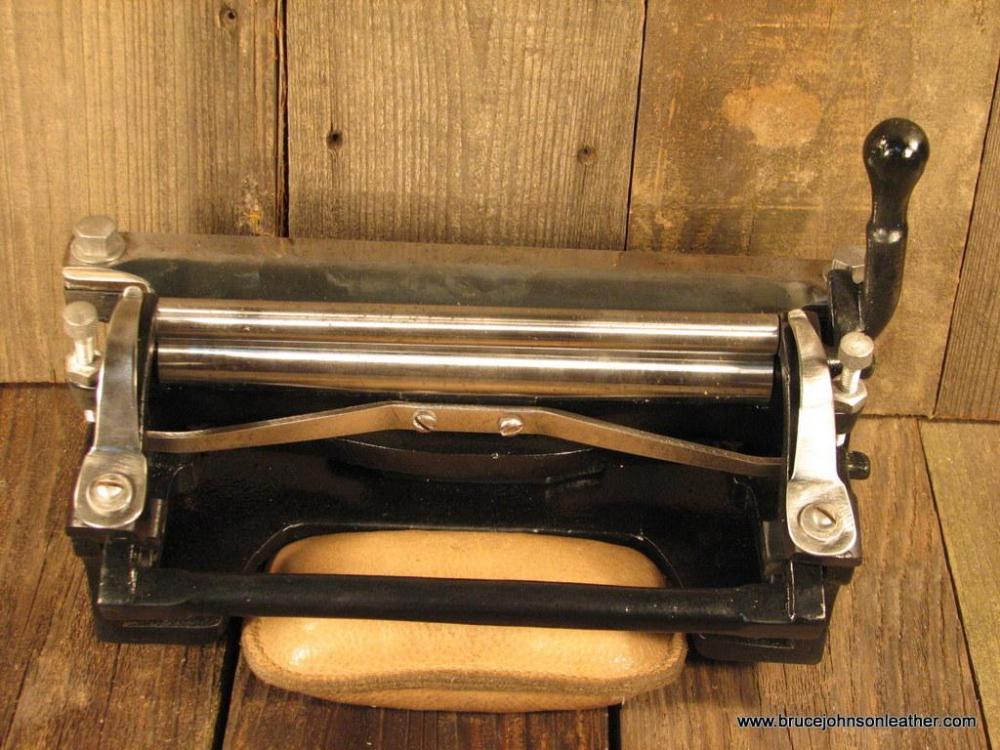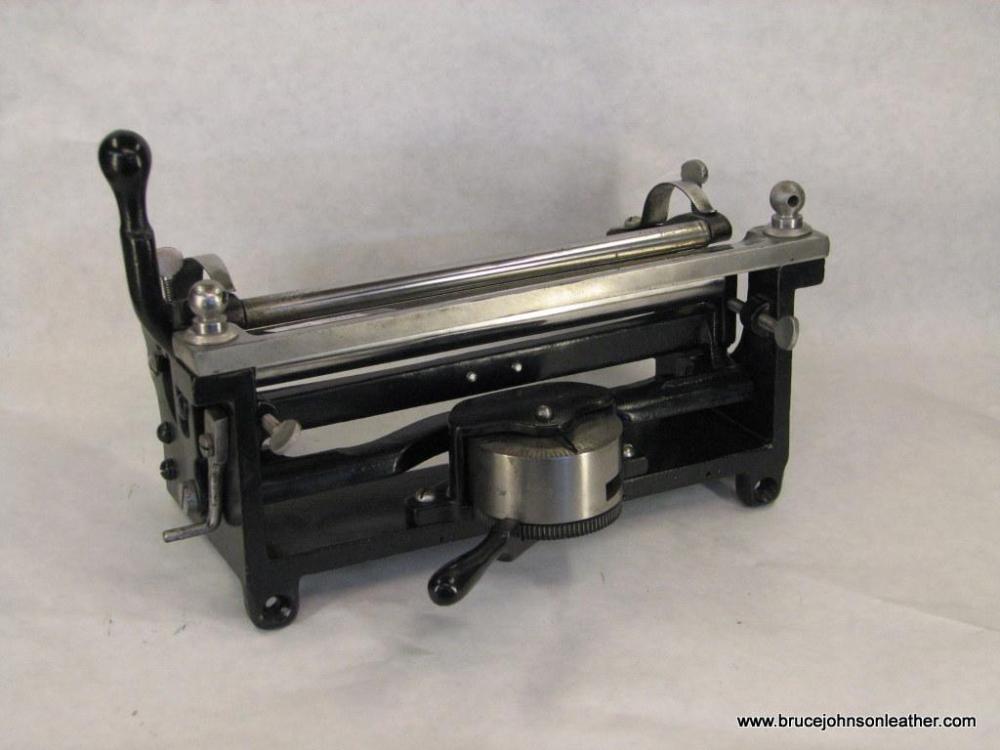-
Posts
4,392 -
Joined
-
Last visited
Content Type
Profiles
Forums
Events
Blogs
Gallery
Everything posted by bruce johnson
-
He should have the #3 size on hand now. I sent in a restock order today that I am picking up next week in Prescott at the show. There are several of the #3 round edgers on that order and he didn't say they were out.
-
Tell him "Hello" and that many people still value his stamping tools. Quality endures. We just stamped off several that we will be taking to the leather show in Prescott in a couple weeks. Thank you also for resurrecting this thread. Reading the names of responders is a list of friends who have a had lot of influence on us over the years, and some continue to!
-
The Tandy and Dream Factory are both based on the design of the Lucris MA 3 clicker made in Australia. I'd look for one of those first if you are set on this design. Solid units with good adjustment for die height. Looks like they still have a US distributor. For about the same money there is Weaver's Mighty Wonder 4 ton. It's a good manual unit too. I had a Lucris for a while several years ago, got a Weaver bench top shop press/clicker plate set up in a deal and sold the Lucris. We both still use that one and it is my wife's choice. I've got a Weaver Mighty Wonder 4 ton I picked up too. I like it but my wife likes the hydraulic better. The benchtop has been refitted with an air over hydraulic jack and runs off a compressor. It is easier for her than pulling a handle and realistically, she is the bigger user. If you are not in a big hurry, the Weaver Mighty Wonder 4 ton will be for sale when I get back from the Southwest Leather Show in AZ (About 3 weeks from now). I'm an hour south of Sacramento.
-
-
After Barge changed their formula several years ago a neighbor and I switched to Renia's Colle De Cologne contact cement. We could get it dropped off by a salesperson on his route and bypassed all the shipping requirements. It is a great contact cement. If you think most solvent based cements have an odor, this stuff makes them seem like kid's paste. No matter the time of year, I used it masked up, outside under an overhang, and hope there was about a 10 mile or better breeze. I couldn't even apply it and toss the pieces into the vent box in the shop without my wife smelling it in the house. When my wife started doing leatherwork the Aquilim was just coming out. She had recently retired from 40 years of occupational exposure to xylene, acetone, and toluene. Going with Aquilim was a no brainer for her.
-
Looking good as usual my friend! Come to Sheridan this year dammit.
-
Rundi has used a bunch of it. It really works well. Key to using is like any contact cement - apply a thin layer to both sides. It maybe takes 10 minutes to tack and stick permanently, apply wetter to reposition. I never had a glue machine and she sure hasn't so can't say on that and don't know. You might be able to contact the rep and see if he knows. He's a good guy for technical support and sets up at the major leather shows in the US too. RENIA GMBH OSTMERHEIMER STRASSE 516 COLOGNE NRW, D 51109 info@renia.com renia.com
-
The large eyes were always weak at the eye just by design.the thinner legs around that wider hole just made them the weak link. Once I got instructed on making a decent tapered end then the normal harness needles were fine and easier to get pulled through the awl stab too. The old joke was that you lost more needles than you broke. That’s one reason I sell John James needles and also carry needle cases. LOL.
-
Looks good on my phone! Thanks Johanna!!!!!
-
I have been updating a recently combined "Resources" section on my website for the last month. It will be a work in progress that I hope you find helpful. https://brucejohnsonleather.com/links-resources - Tool Talk is kind of a blog section - tool selection, tool care, trouble shooting, and announcements/thoughts/mild opinions - Tutorials - These are PDF tutorials I created to address some common questions and tips for using specific tools - Catalogs - I have PDF downloads on this section of older leather tool maker and supplier catalogs - Leather Tool Maker history - this is thumbnail sketch section of some of the leather tool makers of the past - Links for Leather workers - magazines, forums (like Leatherworker.net!), and videos/podcasts that are no cost or by subscription Please check it out and suggestions for more content are always welcome. Thank you! - Bruce
-
Good people to deal with.
-
-
Randy, I don't have a real horse in this race since I sell and have used both. You can get more pressure with control using a push beveler than a bevel blade. You can lay over it and lean into it. With the swivel knife - you get hand pressure and it can get tiring for deeper beveling on long runs. Long straight runs - push beveler. Shorter areas, lighter beveling, or larger curves on stemwork - swivel knife bevel blade.
-
By the construction early to mid 1800s. Steel is usually hard and can be brittle. Without a clear marking the value is pretty much as a user.
-
There have been two books written about tool makers in Newark. There were a bunch as billybop noted. If you could give us a picture of the whole knife that might help narrow it down some. I have never seen an Osborne knife that was size marked, but some earlier makers marked with numbers. A picture would also help establish a value too.
-

NEW - Resources Section on my website
bruce johnson replied to bruce johnson's topic in Leatherwork Conversation
Thank you Tom. This resource section has been a work in progress and still more to come. I have had more suggestions and links sent to me overnight. It is a fun deal for me! -
The two major parts suppliers I am aware of in the US for these have closed down. I would recommend Montana Leather. When we are through there I usually pick up a cutting or feed wheel or two I need for an upcoming refurbishing project. Patrick is the one I chat it up with when we stop - https://www.montanaleather.com/
-
More great work! You need to get back here for a show sometime!
-
Tonight we are going live with a new section on my website. The umbrella is resources and has 5 pages under that. - Blog - short common question answers about tools, insights into whatever grabs me that is leather related, and information/announcements - Tutorials - this page has more in-depth readable and downloads for PDF files for tool use and care - Historical Catalogs and Information - PDF files of old leather tool maker catalogs and historical paper - Tool Maker History and Information - short information on many early leather tool makers - Leatherworker Links - this page has links to current information sources for leather workers - Magazines, Websites and Forums (like here!), and Video links for YouTube channels that I and others have found helpful. Here is the link to the header section - https://brucejohnsonleather.com/links-resources If there are other resources you would suggest, please let me know! Thank you - Bruce
-
A coat or two of the thin to somewhat seal the surface, let it dry. Then thick body CA. I have only used this for bonding smaller pieces of leather to a non-leather surface. I have not bonded two pieces of leather together with CA. There are other adhesives that work more predictably for that.
-
The splitter looks to be an original JD Randall. The hex handle and slot with set screw for the hold down was their pattern. If there is a tag anywhere or marking on the blade - Cleaned up - $700. If no marking then less
-
I agree with FredK on this 100%. Will also add this- Grooving helps to keep your stitches below the surface but also gives you a target to sew into. I don't care if you are machine or handsewing, that grooved line helps line up your awl if you handsewing or your needle on machine sewing. Scratch lines from a divider are not as obvious. No lines and unless you are an elite stitcher, it can look like a cow trail when you sight down the line. That strength issue is a non-factor. People claim that the strength is in the grain and you weaken that. If the flesh side is not much of factor how come we make saddles and belts from heavier leather than wallets? Take the thread of grain you groove off. Pull it apart between two fingers. Decide for yourself if that will make the difference between holding your work together or not. I'm voting with Fred also - buy a good groover. There are a few options out there - Barry King, some (not all) from Amazon, Horse Shoe Brand Tools has a compass style groover. I am bringing on a handled style I really like soon and am putting the final polish on the tips in the next few days.
-
If you want a straight up comparison of the Toro vs 26, call Leather Machine Co. Dave and Vince at Leather Machine Co both used to work for Artisan. I have no experience with the latest owners at Artisan but have a long running relationship with Steve and now Dave and Vince that all worked at Artisan before they started Leather Machine CO.
-

Krebs pattern CS Osborn #85 leather splitter rehab
bruce johnson replied to Zawlard's topic in Leather Machinery
The small lever Is to hold the roller forward. Push forward on the large handle and you can flip the small lever end in behind it to hold it open and feed your leather in. The broken spring - common place for them to break, that is why ShopTalk magazine used to sell replacement top and front springs and large handles because they were the most broken parts on a Krebs and the previous owner restored some. It will probably function just fine like it is as a user. Finding a replacement spring? Hard. Before somebody says "have one made" - The tension has to be just right - too soft and the roller will move forward and get uneven splits, Too hard and you will have hell opening it and you may say bad words if the handle breaks just above the pivot bolt. It happens. As far as cleaning it up, you will not destroy any value on most leather tools and bench machines. The only time I have ever had customers want anything "as-found rustic" was to hang on a wall for decor or photo and video props. One guy told me when he ordered a Krebs - "I don't want it to look like I stole it off the wall at Cracker Barrel". I've probably done 25-30 of them. I take them totally down to parts and blast them, inspect closely for stress cracks, then prime and paint. I just blast that loose chrome off the drum and paint it. Hardest thing on a Krebs is usually the lever on the adjustment drum. There is a little set screw in there that can take work getting out and then setting it back seated into the depression when you reassemble. When you loosen the lever the clicker and spring can sometimes go flying out - be ready with a towel wrapped around most of it to catch it when you work that lever down and out. They clean up really nice and worth the effort. I've attached pictures of a couple I have done. -
I'm glad to announce that Bruce Johnson Leather Tools LLC is now selling new Y-Knot Lace tools to go along with the Wayne Jueschke lace cutter we had sold for while now as well. These are nice lace cutting and processing tools in a few different styles. I've got experience with all of these from work in the past, and am glad to be able to carry them now in our inventory. Please check them out at https://brucejohnsonleather.com/products/braiding-and-lacing-tools/lace-cutters Thank You! - Bruce








